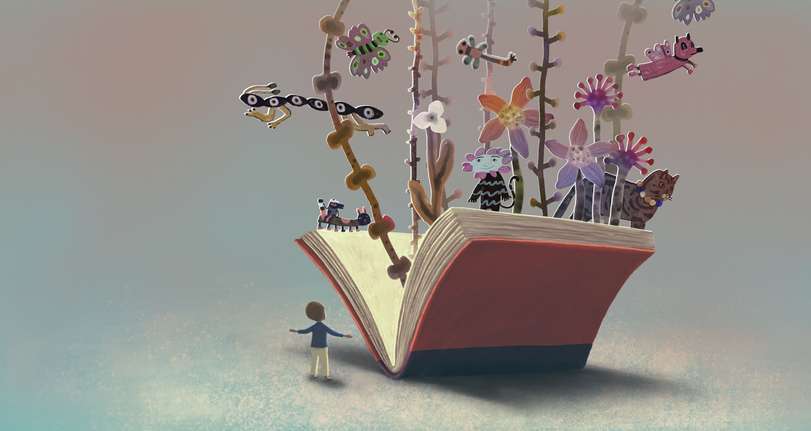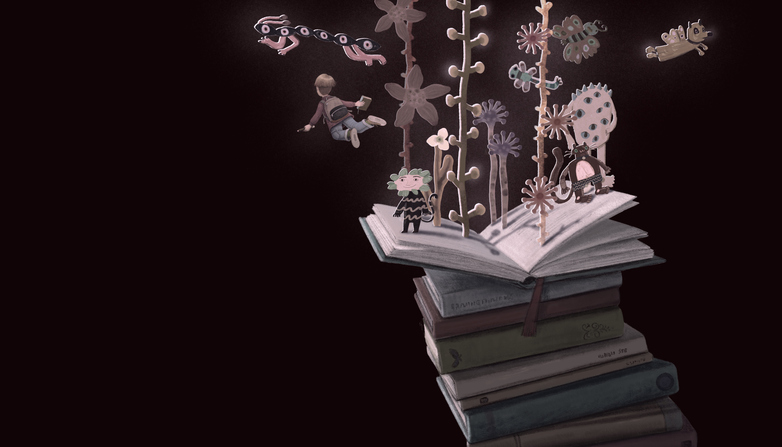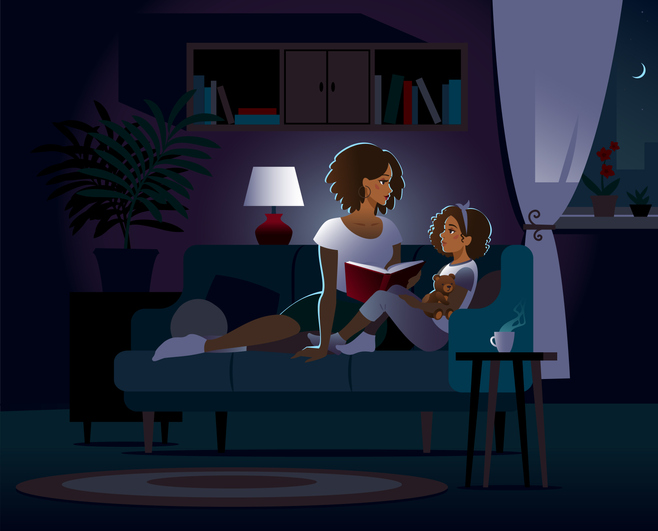Why AI Children’s Books Are Scamming Parents and Kids

Christian Lous Lange once said, “Technology is a useful servant but a dangerous master.” This wise man feared the day technology would take over the world. Today, we witness the truth of his words, as now technology plays a role in nearly every aspect of human life. It has even made its way into education and literature, influencing the way children learn.
Due to the continuous rise in technology, authors are now creating children’s books using artificial intelligence. AI-generated children’s books are so similar to those written by real-life authors, making it pretty difficult to differentiate one from the other. Parents may buy AI books for their kids without realizing they are not human content.
Related: Are Your Kids Cheating with ChatGPT? What Parents Need to Know
Unfortunately, AI children's books do not deliver the same educational value as human-written books. Continue reading to find out why AI children's books are scamming parents and children.
What Are AI Children’s Books?
AI-generated children’s books are one of the most controversial advancements in technology today. These stories are written by artificial intelligence specifically for children. Artificial intelligence algorithms use embedded data to generate stories similar to those written by humans.
Leveraging its natural language processing capabilities, the AI story generators use existing popular children's books as templates to create stories that people would enjoy. These children's books have plots, characters, and dialogues similar to those in a standard human-written book.
However, the rise in AI children’s books comes with numerous concerns for parents and teachers. Usually, storytelling involves delivering a fundamental lesson to the readers. However, artificial intelligence cannot understand valuable life lessons, and therefore AI-generated artwork may not portray the values of life properly. They also lack the emotional depth and human touch needed for a story to resonate within the minds of the readers.
The Rise in AI Children’s Book Authors and AI Illustrators
Publishing a children’s book requires hard work, creativity, and a long period of time. According to Open Universities, writing a book and publishing it usually takes a year, but can take much more time. However, with the rise of AI children’s book authors, not a lot of effort or time is required now to publish a children’s book.
Today, children's book creators are using ai tools like ChatGPT to create stories. These authors publish books in a matter of days and sell them to parents and children on websites like Amazon and Kindle.
For example, according to Time Magazine, Ammaar Reshi, a Product Design Manager, used OpenAI’s program, ChatGPT, to write a story in one weekend. He also utilized Midjourney, another AI application that converts text to images, to create visuals for his story. His short story "Alice and Sparkle" is currently available on Amazon.
However, the book has sparked controversy on social media. Many believe that this story isn’t a true piece of art, according to Central Times. Ammar Reshi claims to be a co-writer of the book, but AI generated the majority of the artwork. Therefore, one can argue that people claiming AI art as their own are actually engaging in plagiarism.

Why Artificial Intelligence is Hurting the Children’s Book Industry
Many artists in the children’s book industry are furious with AI and Ammaar Reshi who has created a children’s book using AI. They are outraged by the recent rise in AI authors, fearing that their work may soon be replaced by technology. They believe that AI can be used as a complementary tool in the creation of books but shouldn’t be used to completely create stories.
Children’s book illustrators and authors have brought attention to the fact that authors who are cheating with ChatGPT and other AI tools to create books are actually using their work without permission, according to Bookriot.
The AI uses data from previously written books and steals authors’ unique styles and voices to generate these new stories. In addition to these issues, there are many other problems existing in AI children’s stories that can harm children and the learning process.
The Issues with AI Children’s Stories
According to Forbes, despite the numerous advantages of AI-generated art, such as decreased effort and time needed, there are still multiple disadvantages to consider. These drawbacks include the potential creation of inappropriate content, the portrayal of wrong information, the lack of human touch and educational value in the ai-generated stories, and concerns regarding privacy invasion.
-
Creation of Inappropriate Content
AI algorithms generate information by using pre-existing data. That data may contain inappropriate content for children and harmfully biased information. Not all AI tools contain a proper content filter. Therefore, AI may generate content that can be interpreted as biased against certain people.
Anything created by AI should be reviewed and edited by humans. However, authors do not review the stories they generate using AI, thereby exposing children to biases and potentially harmful beliefs.
-
Portrayal of Wrong Information
Because AI tools are widely accessible, anyone can use them to create AI books and sell them online. Regrettably, this has led to the availability of multiple AI children’s books with inaccurate information. Some AI children’s books even have titles that are unrelated to the content presented within the books.
In addition to this, AI tools that create images, such as Midjourney and Canva’s AI Image generator, often make huge mistakes in the portrayal of real-world objects. For example, Time Magazine reports that the AI-generated images in the story “Alice and Sparkle” have many flaws including claw-like fingers and improperly positioned shadows.
These flaws are the result of the limitation of AI in accurately portraying the world around us. Only a real-life illustrator and author can publish a children’s book without flaws in the writing and illustrations.
-
Lack of Human Touch
Chatbots such as ChatGPT and GPT-4 generally have trouble understanding the real meaning of life's values, creating stories lacking human emotions. These chatbots rely on pre-existing patterns of popular stories and struggle to understand the fundamental meaning of the data they use to generate content.
Furthermore, AI-generated storybooks lack the human touch and emotional depth to make a story relatable and unique. Human children's book illustrators and authors can effectively write texts and create visuals that may have a great impact on children by adding humans’ raw emotions.
-
Lack of Educational Value
According to the National Children’s Book and National Alliance, children need educational books that capture their interest, motivate them to think and solve issues, and assist them in relating to the world around them. However, when AI develops stories, it simply concentrates on developing texts.
Artificial intelligence stories lack the creativity and interactive features required to make a story educational. This is due to AI's inability to comprehend the words it generates or the data it analyzes. It just follows rules and patterns. AI-generated stories could never offer the same educational value as human-written books provide.
-
Invasion of Privacy
According to CNBC, the rise of AI technology brings with it many risks including the invasion of privacy. When someone asks for AI to generate a personalized story, the AI requires private information to do so. According to the Federal Trade Commission, people should protect themselves from identity theft by never disclosing personal information online.
How Parents Can Avoid AI-Generated Children’s Books and Get Good Children’s Books
There are five ways parents can choose the right book for their children and avoid purchasing AI-generated children's books, and they include researching the author, reading the book before giving it to their kids, using an AI content detection tool, reading the book's reviews, and opting for classic children's literature.
-
Search for the Author of the Book
Reading about the author of a book is the first step to figuring out whether a book was generated by a non-human. Parents can usually find information about an author online or on the author bio page which often exists at the end of a book. If the author's bio mentions that he or she ever used technology to create a storybook, parents should definitely reconsider purchasing that book.
-
Read the Book Before Your Kids

Parents should read the book before giving it to their children to make sure the content is age-appropriate and contains educational value. By reading the book, parents may be able to sense that an AI wrote the book.
AI-generated books usually lack the human touch and emotional depth a human-written book would have. Moreover, the AI-generated book may sound spammy or strange. According to Gold Penguin, AI-generated stories usually include inaccurate details, an abundance of short sentences, and repetitive phrases.
-
Use an AI Content Detection Tool
Parents can use certain AI programs to detect AI content. Fortunately, children's stories are usually short making it easy to type in the words into an AI content detector to determine whether an AI created the story. OpenAI has created a new AI classifier to distinguish between human-written and AI-generated content. There are other AI detection tools that you can find online and use for free to detect AI content.
-
Read Book Reviews
Look up book reviews before buying books. Parents may find book reviews online. Some book reviews may mention whether the book was written by a human author or with the use of AI.
Interestingly, many people spend a lot of time writing reviews, and they fortunately add very specific details about the books which would be helpful in deciding whether a book is child-appropriate. If the reviews mention that the book has a spammy vibe to it or contains inappropriate information, parents should avoid purchasing it.
-
Choose Classic Children’s Literature
Classic Children's books are extremely informative and educational and should be parents' top priorities when choosing books. These classic books are the best option because they have continuously improved children's lives from one generation to the next.
Parents should also consider the works of well-known children's authors. Milwaukee with Kids considers "Charlotte's Web," "Where the Wild Things Are," "The Giving Tree," "A Wrinkle in Time," "Stuart Little," and "The Secret Garden" as some of the best choices for children's books.
The Future of AI and the Children’s Book Industry
All in all, the impact of AI on the future of children’s books is yet to be seen. It is crucial for authors and illustrators to use AI as only a helper in the creation of books.
The main steps in creating a book should be done by human authors to ensure that literature does not lose the great influence it has on young readers and that authors of the world do not lose their livelihoods. Storybooks completely generated by artificial intelligence contain inaccuracies, spammy information, and emotionless characters.
In a world where AI-generated books dominate, the process of learning for children would be completely transformed, and people would lose their love for reading. Therefore, it is essential to set limits for AI and its influence on the world we live in.
For ideas of the best books to read with your kids, check out: Our 18 Must-Read Children’s Books.

